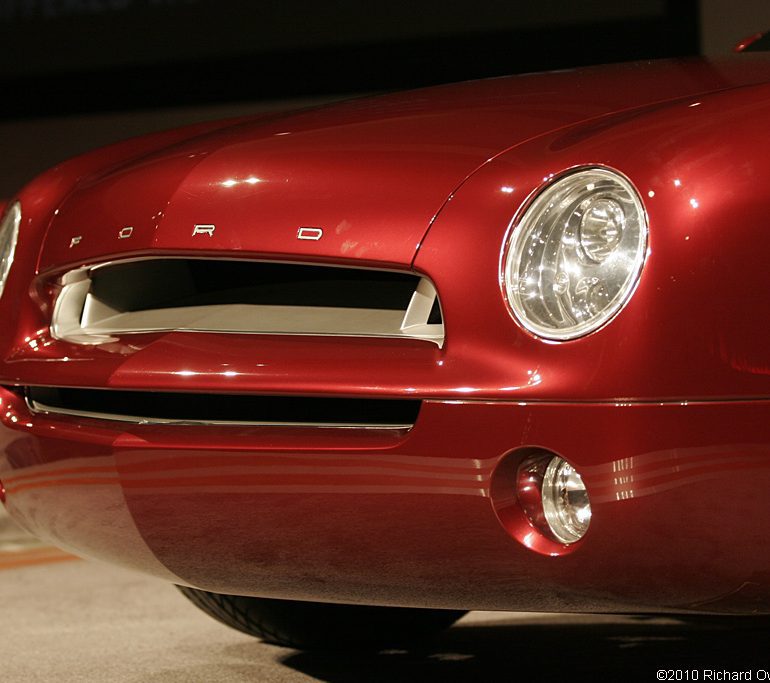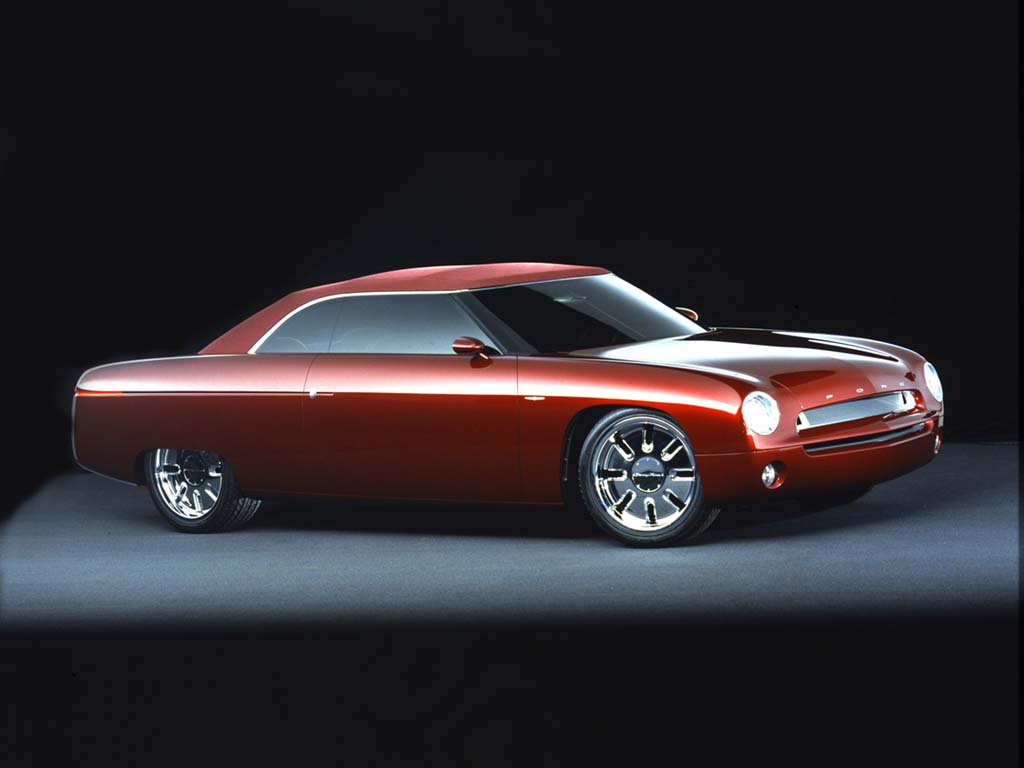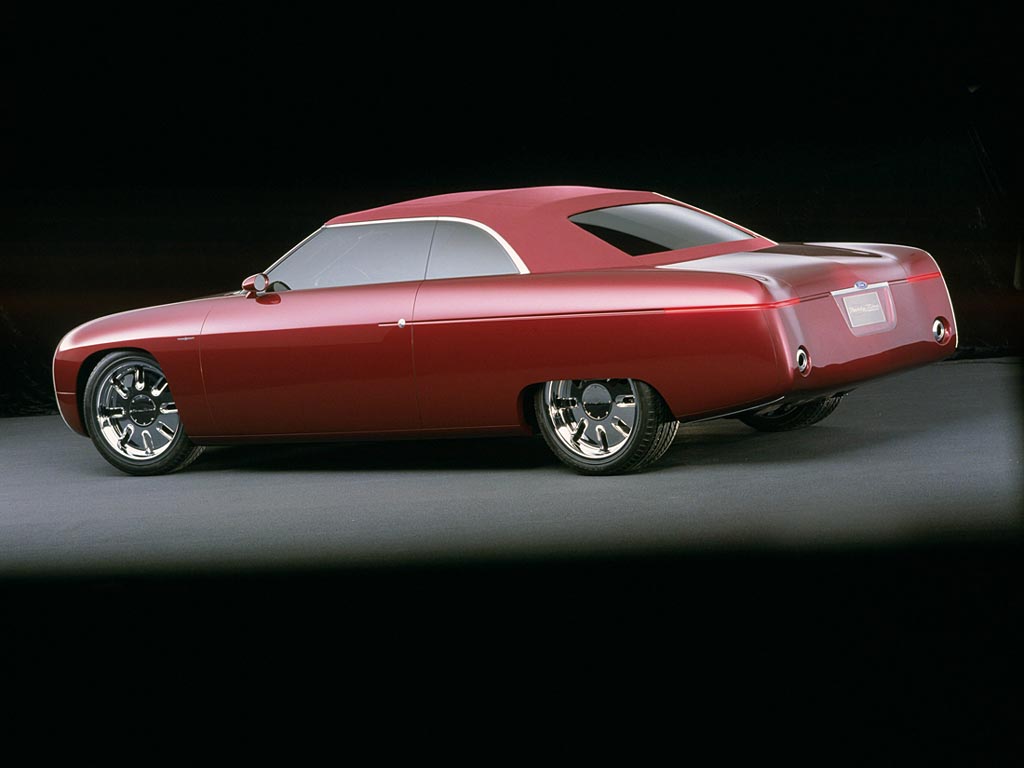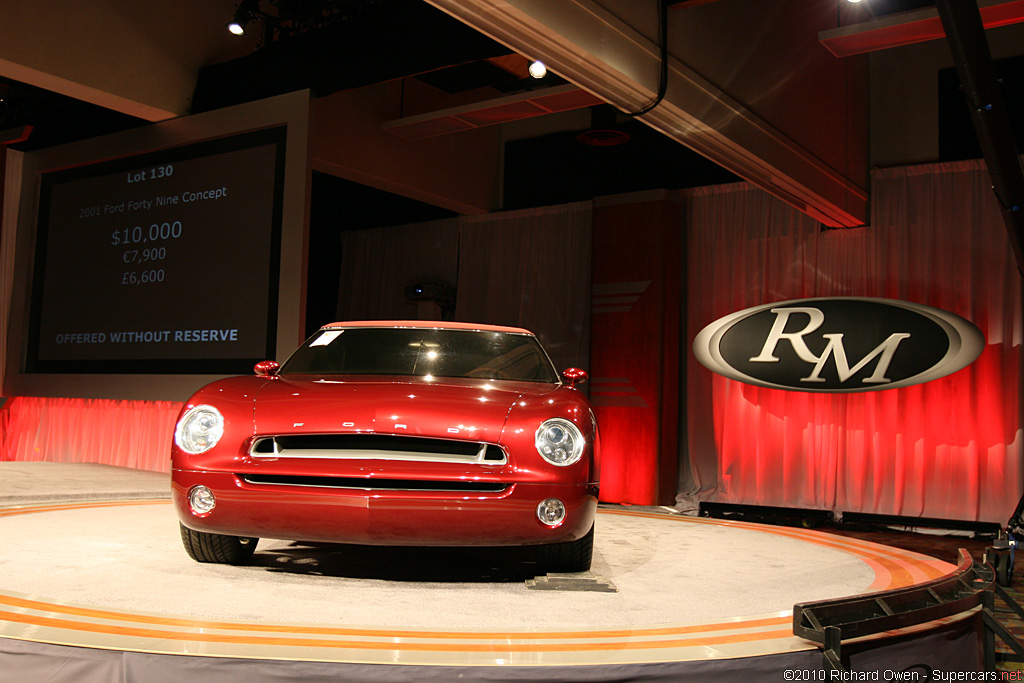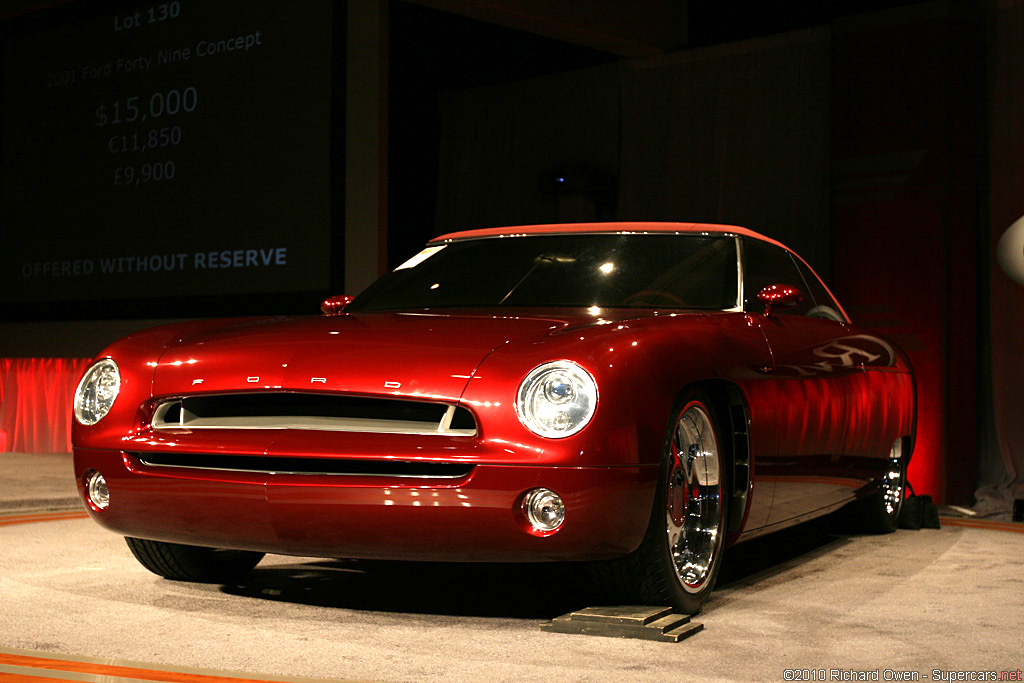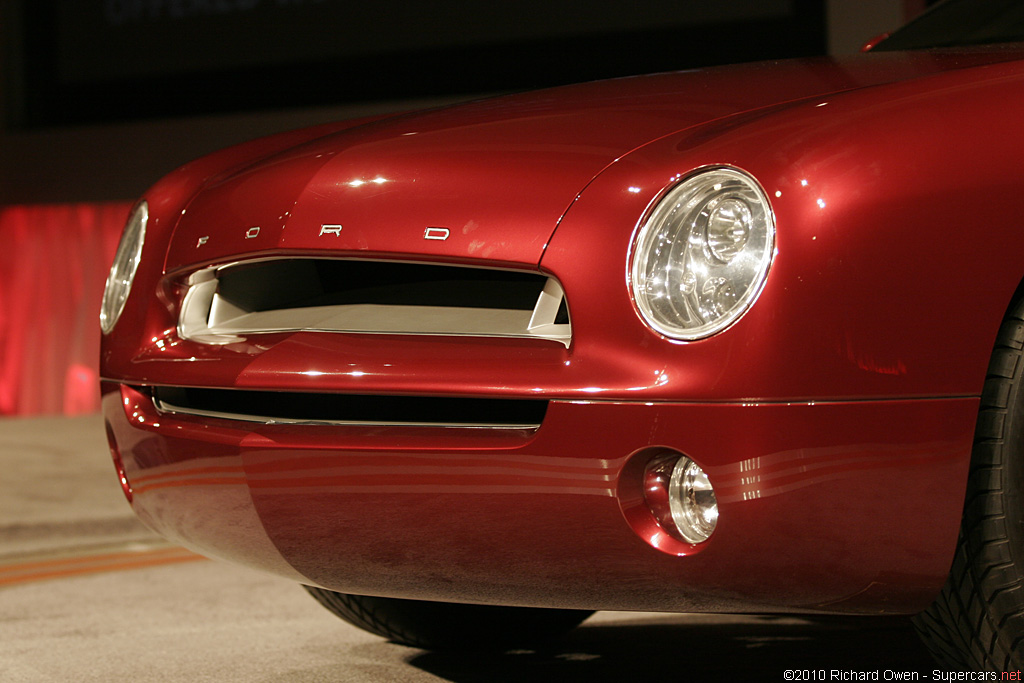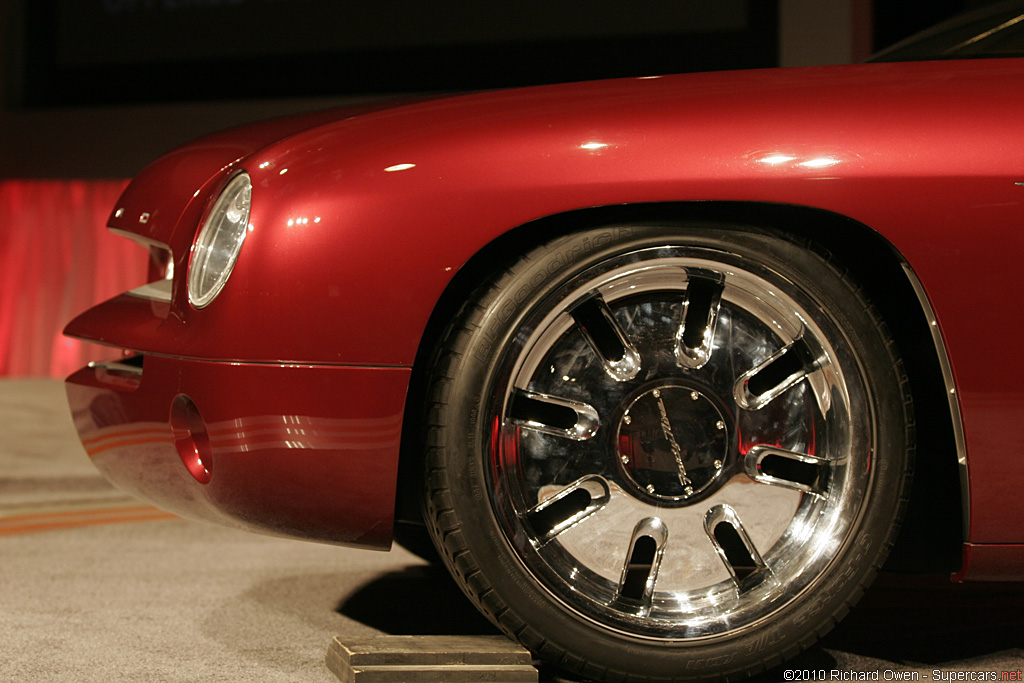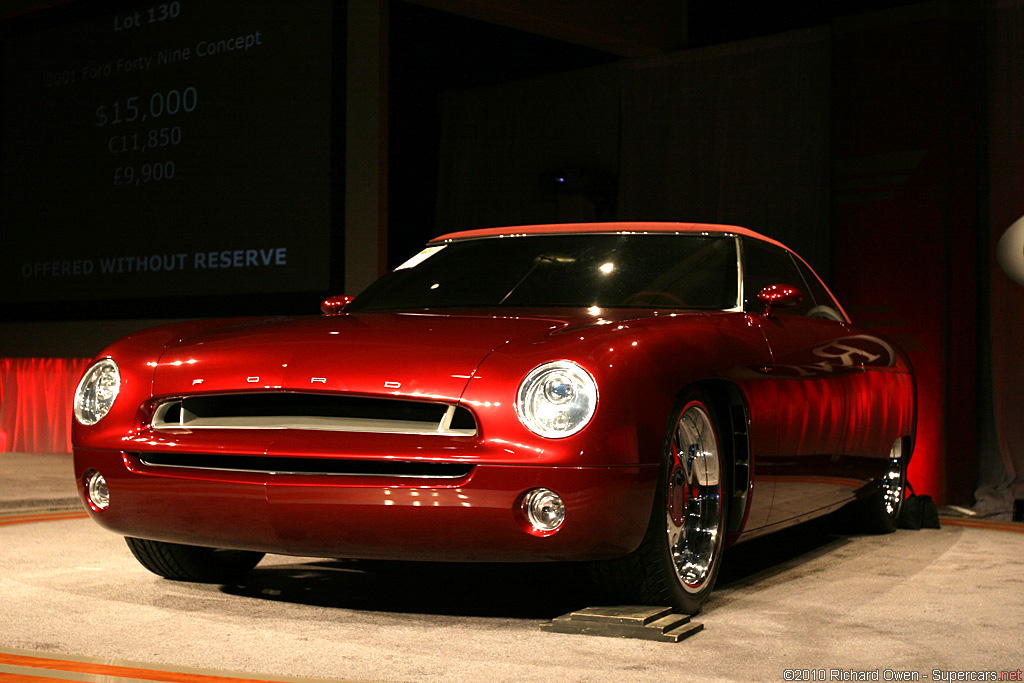2002 Ford 49 Convertible Concept
The ’49 Ford was the key to a company turnaround engineered by Henry Ford II. It was offered in many variations including the most popular model, the covertible. The coupes and station wagon drove strong family sales while the convertible drove important new younger buyers to Ford dealerships.
To create the all-new concept Forty-Nine, Ford designers went back to the car’s roots: simple shapes, clean body panels and modern conveniences.
The interior also is a modern interpretation of the original car’s simple design cues. A cantilevered, bench-style front seat is power-actuated. A floating center console runs the entire length of the interior, giving the impression of four-passenger bucket seating, while also serving to stiffen the vehicle’s structure.
The cars primary gauges are contained within a single round instrument binnacle similar to the production ’49 and hot rods of the era. The analog tachometer takes center stage and is surrounded by the electronic speedometer. A two-tone, leather-wrapped steering wheel features cruise and radio controls on a metal ring, reminiscent of the horn-ring popular in the 1950s.
The Forty-Nine concept is powered by a Thunderbird 3.9-liter, DOHC, 32-valve V-8, tuned to fit the car’s appearance.
In Detail
| submitted by | Richard Owen |
| built at | Detroit, Michigan, USA |
| engine | V8 |
| position | Front Engine |
| valvetrain | DOHC, 4 Valves per Cyl |
| displacement | 3900 cc / 238.0 in³ |
| bhp/weight | bhp per tonne |
| driven wheels | RWD |
| f brake size | mm / in |
| r brake size | mm / in |
| gear ratios | :1 |
Auction Sales History
2001 Ford Forty Nine Concept – sold for $67,000. Tribute to the legendary 1949 Ford. The Forty Nine concept, introduced at the 2001 North American International Auto Show in Detroit, harkened back to that time, described by the company as a “sentimental drag race down memory lane.” Its hyper-smooth appearance was achieved by an all-glass upper body structure with concealed pillars and windshield wipers. The exterior finish was accented by bright chrome wrapping around the greenhouse and modest chrome accents elsewhere, such as badging and 20-inch chrome wheels. The frontal aspect was heightened by round high-intensity-discharge and projector-beam lighting. In the rear, sleek, narrow wrap-around LED tail lamps made a distinct statement.
The interior was a modern interpretation of the original car’s simple design cues. A cantilevered, bench-style front seat was power-actuated. A floating center console ran the entire length of the interior, giving the impression of four-passenger bucket seating, while also serving to stiffen the vehicle’s structure. The floating console housed the five-speed shift lever and ventilation system for both front- and rear-seat passengers.
The drivetrain was projected to come from the revived two-seat Thunderbird, a 252-bhp 3.9-liter DOHC V8 with five-speed automatic transmission. Finished in satin black, stainless and chrome metal finishes, the engine compartment pays homage to hot-rodders’ obsession with performance and appearance. Auction Source: RM Auctions’ 2010 Sports & Classics of Monterey


